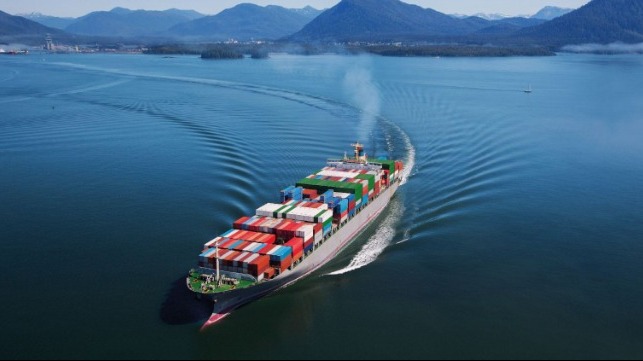Container Lines Blank Sailings Bring Capacity Back to 2019 Levels

The container shipping lines are taking steps to manage capacity as rates plummet and shippers continue to reduce volumes. Despite the industry’s expectation that the market would normalize at this time of year, the changes have come on suddenly prompting the major lines to accelerate cuts in capacity by blanking sailing in efforts to slow the downward pressures on rates.
“The level of blanked capacity is not only higher than in 2019, but has also increased from what was scheduled three weeks ago in the outlook from week 37,” comments Alan Murphy, CEO of Sea-Intelligence. “In the weeks following Golden Week (weeks 41-43), carriers are taking out significant levels of capacity per week.”
An analysis of capacity on the major trade routes by Sea-Intelligence shows an average 26 to 31 percent capacity reduction on Transpacific route by carriers over weeks 41-43, following China’s recent holiday. Similarly, they calculated an average reduction of capacity of 19 to 27 percent between Asia and Europe.
These cuts are being seen in a reduced number of vessels arriving at the major ports in the U.S. and Europe. The Marine Exchange of Southern California reports for example that just eight containerships are currently steaming toward the ports of Los Angeles and Long Beach as of October 11. Over the next three days, Captain Kip Louttit, Executive Director of Marine Exchange of Southern California, says that 12 containerships are scheduled to arrive, which is five fewer than the "normal" level of 17, based on 2018/19 pre-COVID levels. However, at Savannah on the U.S. East Coast, the backlog of containerships remains and in Northern Europe, congestion continues as a lingering effect in part from the strikes at German ports during June and July and the recent actions at Felixstowe and now Liverpool in the UK.
“Freight rates continue to fall considerably,” notes Murphy highlighting the drop on both the routes to the U.S. West Coast and Europe from Asia. “The question is why? The simple answer is because carriers added so much capacity last year, that even with these levels of capacity reductions, the underlying capacity has still only been brought in line with 2019.”
Sea-Intelligence calculates that in 2022 for weeks 41-43, Asia-North America West Coast is scheduled to see capacity grow by 1.9 percent when annualized over 2019, while Asia-North America East Coast and Asia-North Europe are slated to see even larger capacity increases, of 3.1 percent and 5.1 percent. Only Asia-Mediterranean is down, contracting by 1.3 percent in 2022.
“With this said, a more pertinent question then becomes whether carriers can really blank more capacity to try and control the freight rate drop,” said Murphy.
The peak reductions during the initial Covid impact were 35 to 53 percent, according to Sea-Intelligence, but they note that those declines lasted for only one to two weeks. The carriers then moved to 10 to 30 percent capacity reductions for a few more weeks. By the summer of 2020, carriers had largely stopped blanking sailings.
Carriers have already returned to the range of 10 to 30 percent capacity reductions according to Sea-Intelligence. Their analysts note that a 50 percent reduction in deployed capacity will not only create significantly more supply chain problems but will also likely have the cargo owners “up in arms.”
Sea-Intelligence concludes that there is a very delicate balancing act for the carriers to follow going forward to reduce overcapacity while not creating problems with shippers. The efforts to balance capacity will also become increasingly critical for the carriers as the markets are expected to see the introduction of the first of the newbuilds in 2023.
